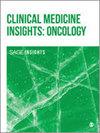Cost-Effectiveness Analysis of 6 Tyrosine Kinase Inhibitors as First-Line Treatment for ALK-Positive NSCLC in China
IF 1.9
4区 医学
Q3 ONCOLOGY
引用次数: 0
Abstract
Background:Lung cancer ranks first in both cancer incidence and mortality in China. The emergence of novel treatments for ALK-positive NSCLC led to an improvement in survival and quality of life for patients with advanced ALK mutation-positive non-small cell lung cancer (NSCLC). This study sought to assess the cost-effectiveness of 6 tyrosine kinase inhibitors (TKIs)—crizotinib, alectinib, ceritinib, brigatinib, ensartinib, and lorlatinib—as first-line treatments for ALK-positive NSCLC from the perspective of the Chinese health care system.Methods:A Markov model was developed to estimate the cost-effectiveness of these 6 TKIs. In this model, ALK-positive NSCLC patients were initially simulated to receive 1 of the 6 TKIs as first-line therapy, followed by different TKIs as subsequent treatment and salvage chemotherapy as last-line treatment. Survival data were sourced from the latest published clinical trials. Costs were derived from recent national health insurance negotiations and hospital information systems of selected health care facilities. Utilities for healthy states and adverse events were obtained from the literature. One-way and probabilistic sensitivity analysis as well as scenario analysis was conducted to assess the robustness of the results.Results:Compared to ensartinib, crizotinib, alectinib, ceritinib, brigatinib, and lorlatinib demonstrated incremental quality-adjusted life years (QALYs) of −1.13, 0.39, −0.58, −0.09, and 0.35, respectively. The corresponding incremental costs were $10 677, $33 501, −$6426, $2672, and $24 358. This resulted in ICERs of –$9449/QALY, $85 900/QALY, $11 079/QALY, $29 689/QALY and $69 594/QALY, respectively.Conclusion:Crizotinib was considered to be absolutely dominated by ensartinib. Under a willingness-to-pay threshold of $38 223/QALY, ceritinib and brigatinib were cost-effective compared with ensartinib, while lorlatinib and alectinib were not cost-effective when compared with ensartinib. Overall, brigatinib emerged as the most cost-effective treatment among all the options considered.中国6种酪氨酸激酶抑制剂一线治疗ALK阳性NSCLC的成本效益分析
背景:肺癌在中国的发病率和死亡率均居首位。ALK突变阳性非小细胞肺癌(NSCLC)新疗法的出现提高了晚期ALK突变阳性非小细胞肺癌(NSCLC)患者的生存率和生活质量。本研究试图从中国医疗体系的角度评估6种酪氨酸激酶抑制剂(TKIs)--克唑替尼、阿来替尼、色瑞替尼、布瑞加替尼、恩沙替尼和洛拉替尼--作为ALK阳性NSCLC一线治疗的成本效益。在该模型中,ALK阳性NSCLC患者最初被模拟接受6种TKIs中的一种作为一线治疗,然后接受不同的TKIs作为后续治疗,最后接受挽救性化疗作为最后一线治疗。生存数据来自最新发表的临床试验。费用来源于最近的国家医疗保险谈判和选定医疗机构的医院信息系统。健康状态和不良事件的效用来自文献。结果:与安沙替尼相比,克唑替尼、阿来替尼、塞瑞替尼、布加替尼和洛拉替尼的增量质量调整生命年(QALYs)分别为-1.13、0.39、-0.58、-0.09和0.35。相应的增量成本分别为 10 677 美元、33 501 美元、-6426 美元、2672 美元和 24 358 美元。由此得出的ICER分别为-9449美元/QALY、85 900美元/QALY、11 079美元/QALY、29 689美元/QALY和69 594美元/QALY。在38 223美元/QALY的支付意愿阈值下,与安卡替尼相比,色瑞替尼和布加替尼具有成本效益,而与安卡替尼相比,洛拉替尼和阿来替尼不具有成本效益。总体而言,在所有备选方案中,布加替尼是最具成本效益的治疗方案。
本文章由计算机程序翻译,如有差异,请以英文原文为准。
求助全文
约1分钟内获得全文
求助全文
来源期刊

Clinical Medicine Insights-Oncology
Medicine-Oncology
CiteScore
2.40
自引率
4.50%
发文量
57
审稿时长
8 weeks
期刊介绍:
Clinical Medicine Insights: Oncology is an international, peer-reviewed, open access journal that focuses on all aspects of cancer research and treatment, in addition to related genetic, pathophysiological and epidemiological topics. Of particular but not exclusive importance are molecular biology, clinical interventions, controlled trials, therapeutics, pharmacology and drug delivery, and techniques of cancer surgery. The journal welcomes unsolicited article proposals.
 求助内容:
求助内容: 应助结果提醒方式:
应助结果提醒方式:


